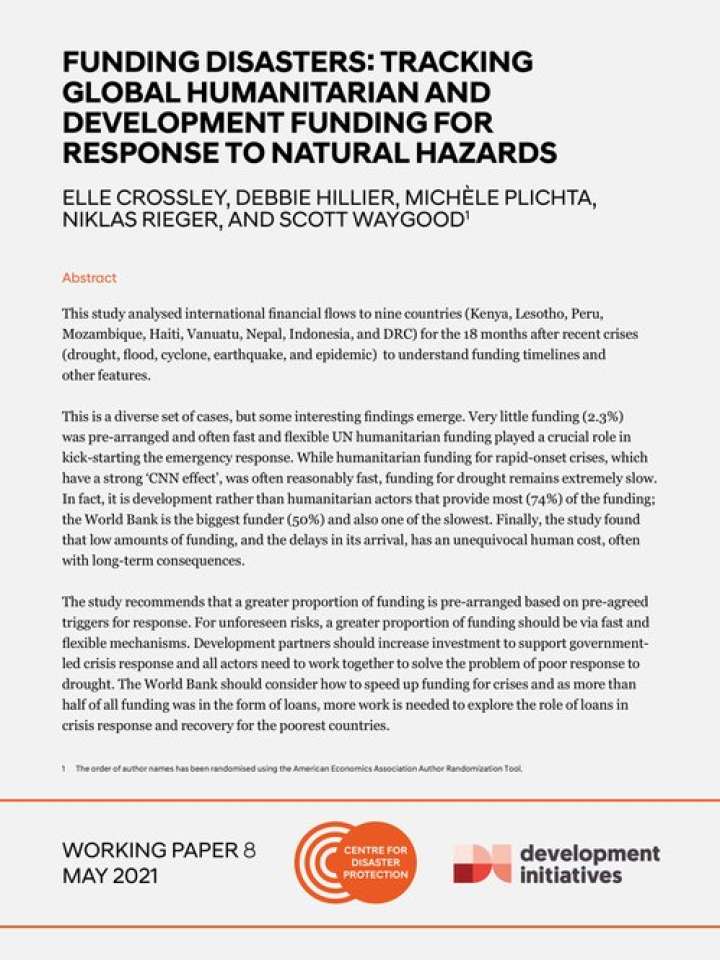Funding disasters: tracking global humanitarian funding for response to natural hazards
This study analyses international financial flows to nine countries for the 18 months after recent crises—drought, flood, cyclone, earthquake, and epidemic. It complements the Centre’s analysis of funding flows to respond to the COVID-19 pandemic, exploring similarities and differences for funding flows for natural hazards. International funding often covers only a small part of the cost of crises (much can also come from national sources) and, in recent years, international technical and financial support has been provided to communities and governments to strengthen their resilience and build their capacity to absorb, adapt, and respond.
The study recommends that a greater proportion of funding is pre-arranged based on pre-agreed triggers for response. For unforeseen risks, a greater proportion of funding should be via fast and flexible mechanisms. Development partners should increase investment to support government-led crisis response and all actors need to work together to solve the problem of poor response to drought.
Explore further
